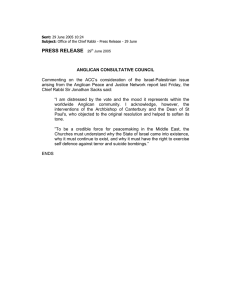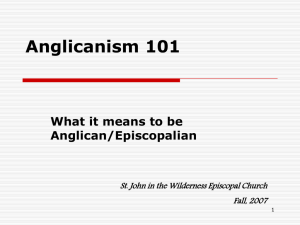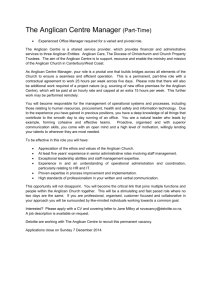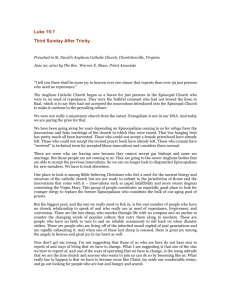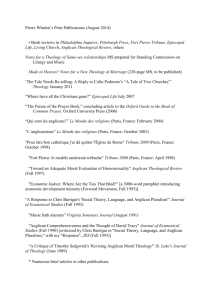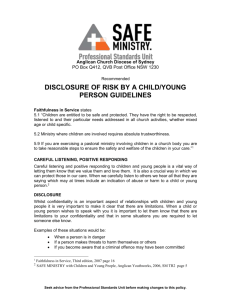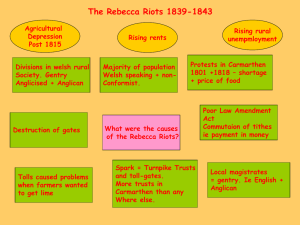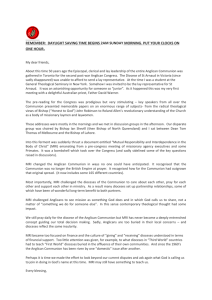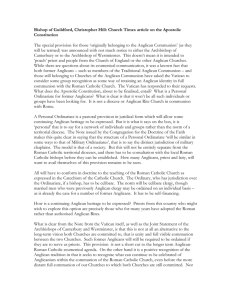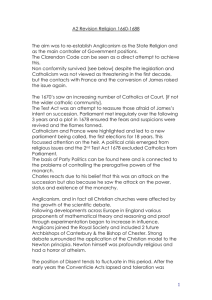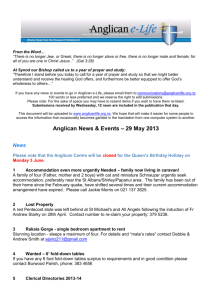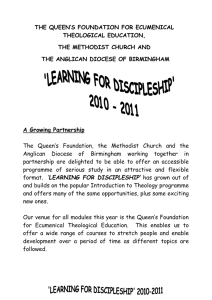Anglicanism Ppt - Gerry-Sozio-SOR
advertisement
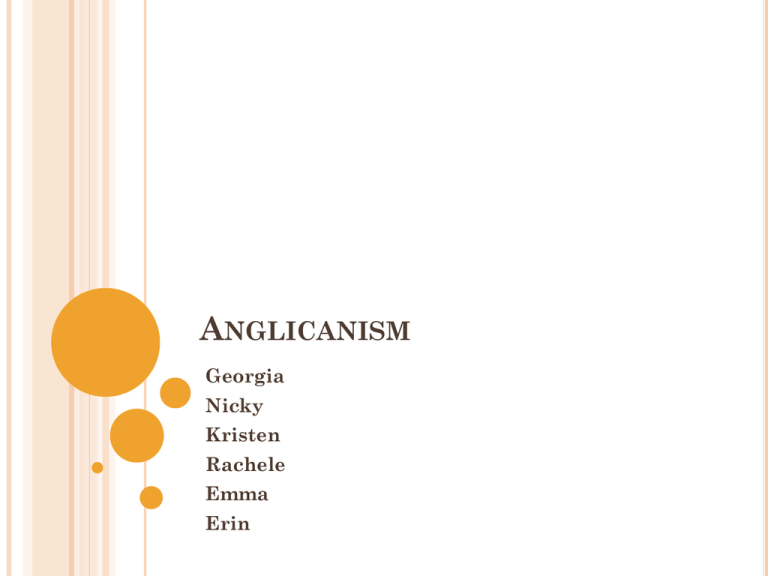
ANGLICANISM Georgia Nicky Kristen Rachele Emma Erin ORIGINS AND HISTORY In the early 16th century, England was under papal supremacy, but this was all changed during the reformation of the church. Pope Leo X denied the king of the time, Henry VIII permission to divorce his wife. Henry then rejected papal authority and formulated the Act of Supremacy which made the English sovereign ‘The only supreme head of the Church of England’ The Archbishop of Canterbury was and still is regarded as the leader of the Anglican church, instead of the Pope. IN AUSTRALIA Anglicanism started in Australia in 1788, from the start of colonization. Its first Bishop was named in 1836. The Church never became the main established religion, but still held a significant following. In 1981 the Anglican Church of Australia became an independent part of the Anglican Communion. In 2001 3.8 million people were Anglican, 21% of the population. The Church is organised into 23 dioceses grouped into 5 provinces or regions. As well as dioceses and parishes there are many different organisations in areas such as education, health, mission, social welfare, finance and communications which are part of the Anglican Church. KEY MOVEMENTS Anglicanism consists of the world-wide grouping of churches, several slightly differing in views but all holding the same key beliefs. Some are: Evangelical Anglicans Strong connections with Protestant worship, and simplicity. Anglo Catholic Leans more toward a catholic form of worship Middle Church Anglicans Take the middle path between the above mentioned. Accept new religious views, such as believing the theory of evolution. ORGANISATIONAL STRUCTURE Monarch of England - Supreme Governor of the Anglican Church Archbishop of Canterbury -‘First among equals’, the leader of the church Archbishops -Oversee Provinces made up of dioceses Bishops -Oversee dioceses made up of parishes Parish Priests -Oversee the parishes Laypeople These then combine in the Anglican Consultative Council which holds meetings with Anglican bishops, clergy and laity and the Anglican Communion Primates’ Meeting in which the chief bishops/archbishops of each national Anglican Communion meet. KEY BELIEFS Parish life centres on weekly celebration of Holy Communion. The Book of Common Prayer (1662), a compilation of the Church’s liturgical forms, along with The Thirty-Nine Articles, remains the distinguishing feature of Anglican identity. In addition to the key beliefs common to all Christians, Anglican Christians believe: • • • Baptism and Eucharist are the two central sacraments. Anglicans believe that the bread and wine are only symbols of Christ, not actually becoming the Body and Blood of Christ. There is diversity regarding Mary in the Anglican church. Some pray to her and some do not, while some believe she remained a virgin her entire life and others believe she had children with Joseph. KEY FESTIVALS Anglicans follow the Principal Feast dates of the Western Church Calendar. Principal Feast Days include: • • • • • • • • • Christmas Day The Epiphany The Presentation of Christ in the Temple The Annunciation of Our Lord to the Blessed Virgin Mary Easter Day Ascension Day Pentecost (Whit Sunday) Trinity Sunday All Saint’s Day
